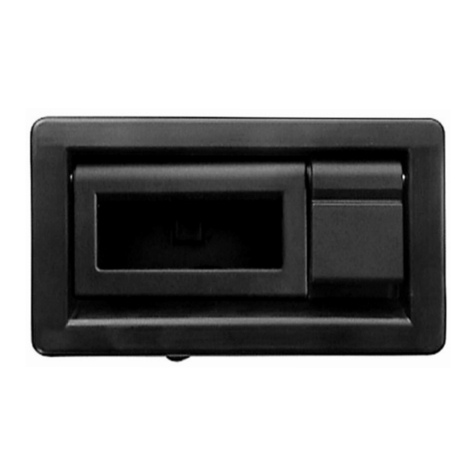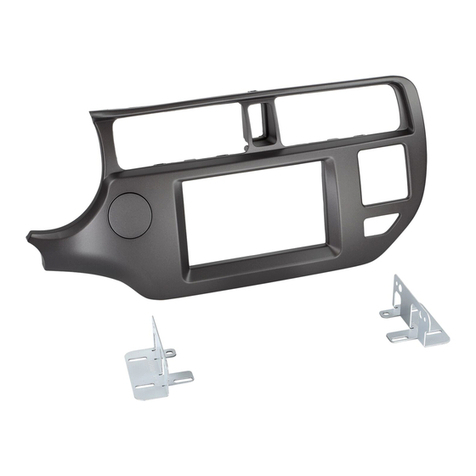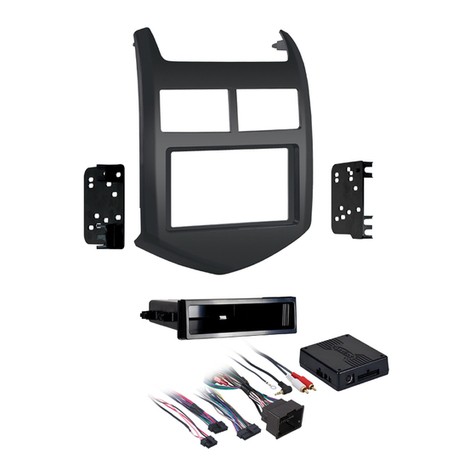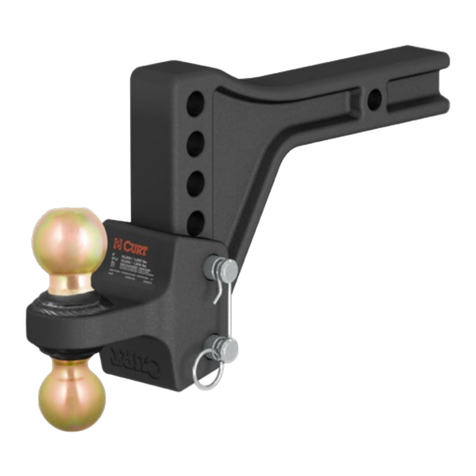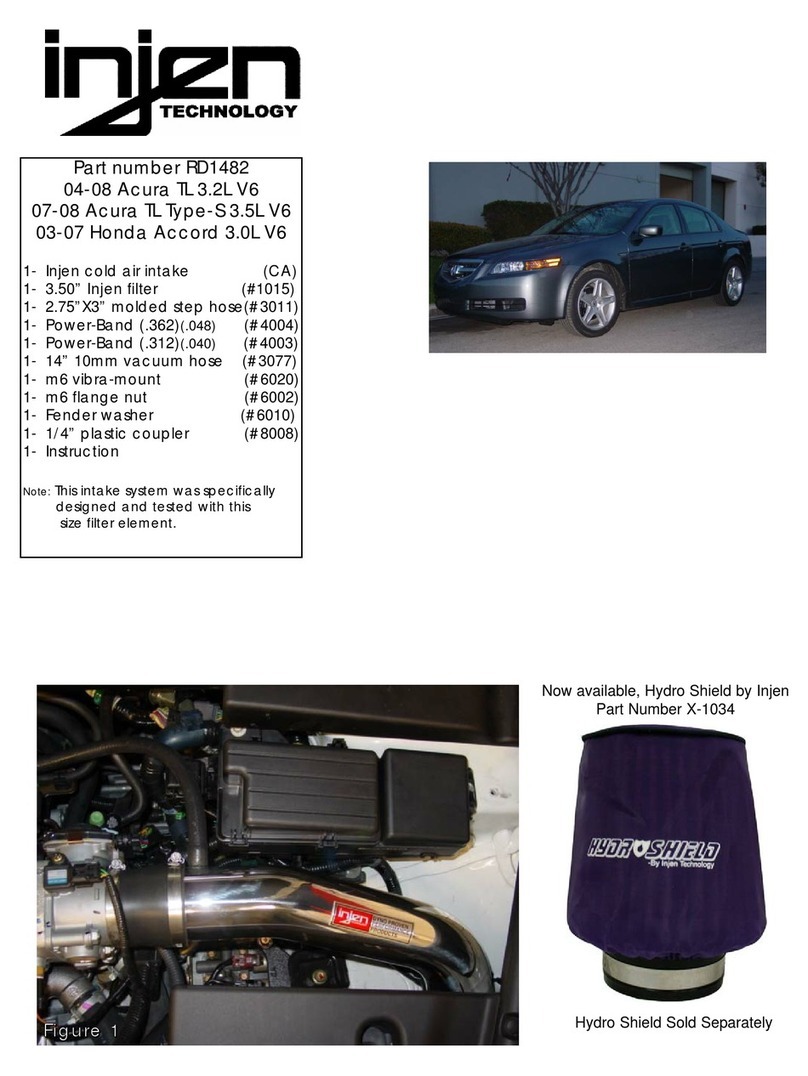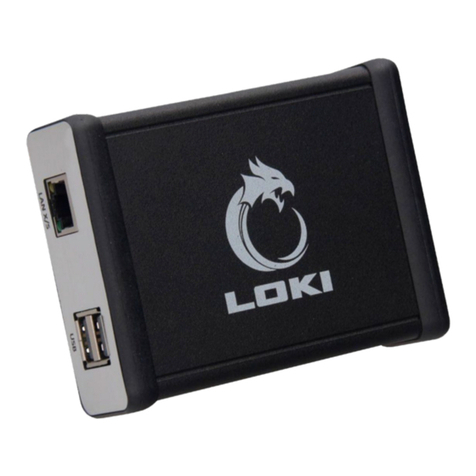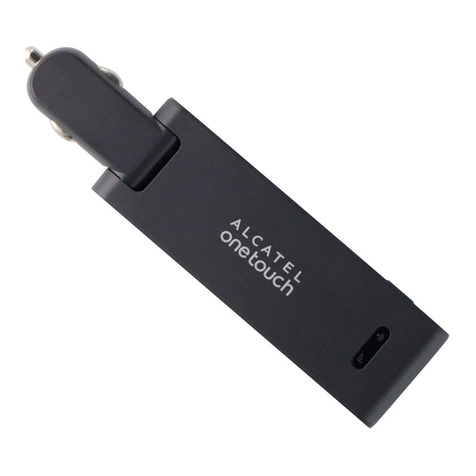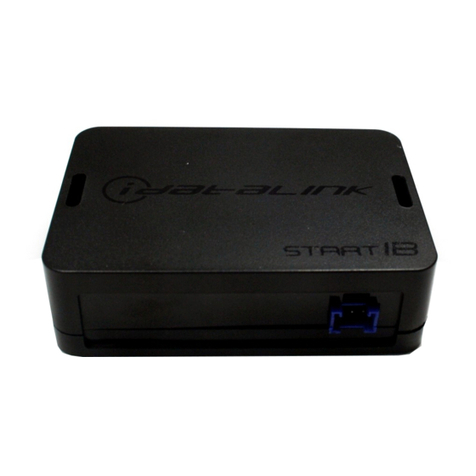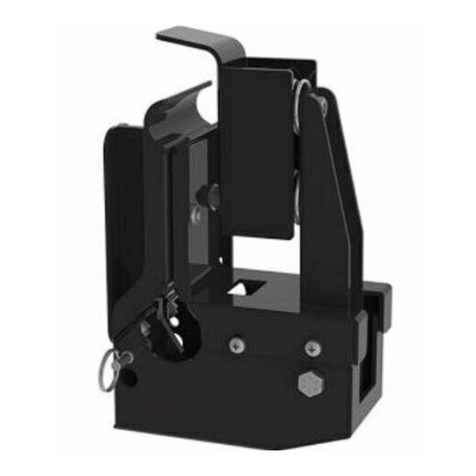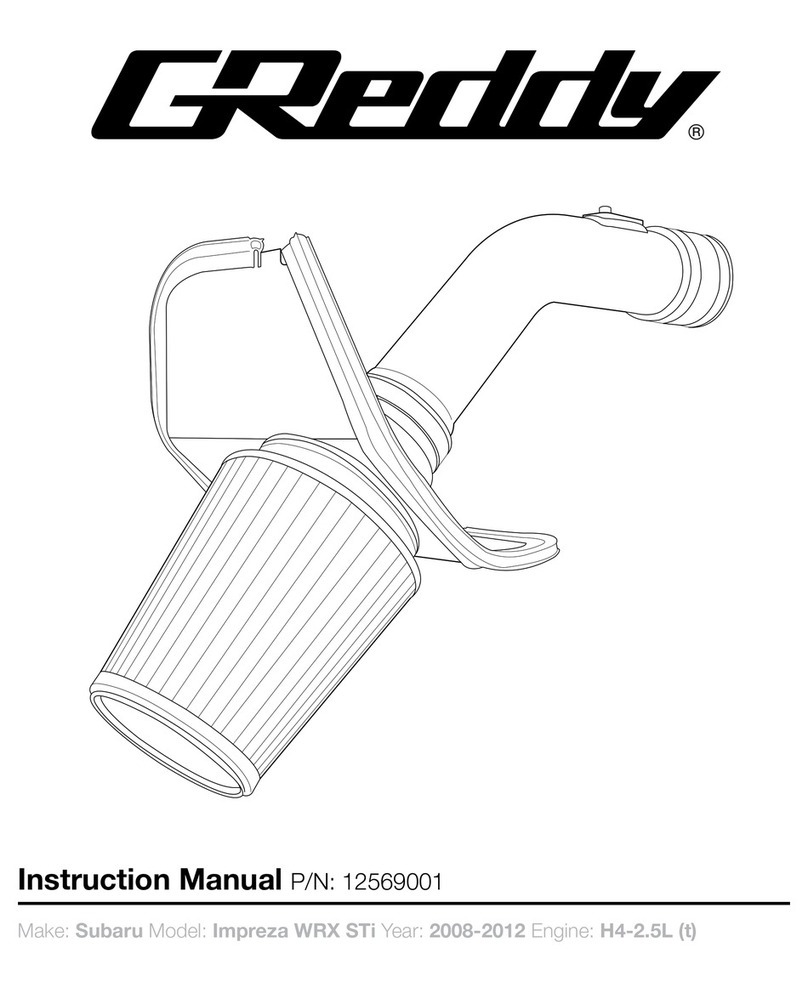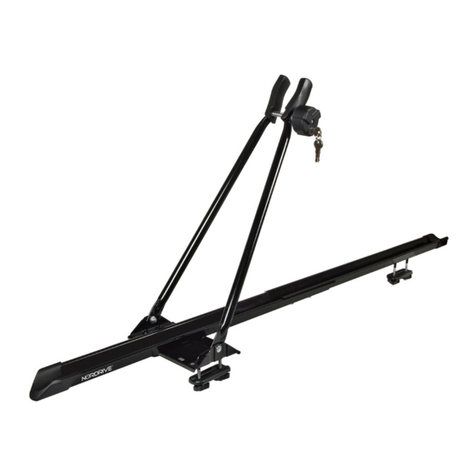Prima Maniglie P.119 User manual

1
ITALIANO
ITALIANO
ITALIANO
ITALIANO
ITALIANO
ITALIANO
ITALIANO
ITALIANO
ITALIANO
ITALIANO
ITALIANO
ITALIANO
ITALIANO
ITALIANO
ITALIANO
ITALIANO
ITALIANO
ITALIANO
ITALIANO
ITALIANO
2
Maniglie P.119 P.141
PRIMA Industries Srl
42015 Correggio (RE) Italy
Tel. +39 0522 637 583 - Fax +39 0522 641 682
PRIMA Industries:
Vehicle division
Cod.40552
Rev. 3 30/05/2011
- Per mantenere una buona estetica della maniglia nel tempo, evitare il contatto con cere per carrozzerie
e con idrocarburi (nafta, benzina, ecc.).
- Durante le operazioni di montaggio/smontaggio e le manutenzioni ordinarie, si consiglia di attenersi alle
norme di sicurezza previste (D. Lgs 81/2008) e di utilizzare abbigliamento adeguato (camici, occhiali, guanti,
ecc.).
- Ingrassare la serratura ogni due mesi con grasso Tribol 4020 - 460 - 2 a base minerale.
- La ditta non assume nessuna responsabilità nè rilascia alcuna garanzia se il prodotto viene inserito in
sistemi o montato con particolari che non siano di produzione della ditta stessa. La ditta si ritiene svinco-
lata da qualsiasi indennizzo eventualmente richiesto dall’acquirente per danni subiti o arrecati a terzi.
AVVERTENZE
P.177ø4 mm
P.174 P. 9 1
P. 1 8
P.175
P.176
VERSIONE PNEUMATICA
5 (Solo per maniglie Pneumatiche) - Collegare
tubo in Rilsan P.177 di Ø 4mm (tagliato con
apposite forbici a lama di cutter per evitare
ovalizzazioni o bave - vd. fig.F) al raccordo P.18
fissato sul cilindro pneumatico (vd. fig.G).
Collegare il terminale libero del tubo ai raccordi
P.174, P.175, e P.176 dell’impianto pneumatico
dell’autobus.
(fig. G)
(fig. F)
Le maniglie possono essere fornite in tre modelli: M (manuale), PN (pneumatica), E (elettrica); le
dimensioni d’ingombro e di fissaggio nei tre casi sopracitati sono identiche (vd. fig.A e fig. B).
Questo manuale tratta i primi due modelli (per maggiori informazioni riguardo la versione E, contattare
l’ufficio commerciale).
Verificare se la serratura é già inserita nell’apposita
sede (sotto lo sportello di protezione). In mancanza
di serratura, siete in possesso della versione J.O.K.
quindi seguire le indicazioni nel manuale utente
cod.40712. In presenza di serratura per liberare il
meccanismo di funzionamento, la chiave deve
essere in posizione orizzontale (vedi fig.C)
Nelle maniglie pneumatiche, l’apertura / chiusura è
comandata:
a) dalla plancia comandi dell’autista che aziona una
centralina elettro-pneumatica P.131 o P.132;
b) con chiave d’emergenza direttamente sulla
maniglia.
La chiave riporta il codice di riconoscimento grazie
al quale è possibile richiedere ricambio alla ditta
PRIMA in caso di smarrimento.
P119
P141
1 - Assicurarsi che la guarnizione aderisca al
profilo della maniglia e collocare quest’ultima
nell’apposita sede del portellone (l’utilizzo di
silicone adesivo o di altri collanti generalmente
impiegati non danneggia la guarnizione).
2 - Allineare i fori di fissaggio ai corrispondenti
creati nel portellone seguendo le indicazioni
della dima di foratura (assicurarsi che vengano
rispettate le condizioni riportate in fig.D/1).
3 - Fissare la maniglia al portellone utilizzando
quattro viti M6 (viti e rondelle non sono
comprese nella confezione). Stringere le viti ad
una coppia di serraggio max di 0.7 Kgm - 5
Ftlbs (dopo il serraggio delle viti, le boccole
della maniglia devono appoggiare sulla lamiera
interna dello sportello vd. fig.D/2).
4 - Applicare le aste di collegamento P.99 o P309 alle serrature P.70 ed alla camma. Le aste hanno un
senso (destro e sinistro) ed è possibile tararne la lunghezza agendo sulle pieghe di registro (vd. fig.E2).
Solo le maniglie P.141 possono aprire N° 4 P.70 installando una seconda camma e collegandola al 2° foro
dell’impugnatura (vd. fig.E1)
dima di foratura
(fig.A) (fig. B)
(fig. C)
Sportellino di protezione
Chiave
Max 2
Min 50
Viti M6
MT=0.7Kgm
(5 Ftlbs)
(fig. D1) (fig. D2)
P. 7 0
P.70n
P.70 bis
P.130
P. 9 9
P.309
P. 11 9
P.141
P.178
P.183
Camma
Piega di registro
Perno di riscontro
(fig. E2)
(fig. E1)
1 - Smontare le aste di collegamento dalla camme di azionamento liberandole dal giunto P.94.
2 - Allentare e rimuovere le quattro viti di montaggio M6.
3 - (Valido solo per versione PN) Controllare preventivamente di avere chiuso l’impianto pneumatico. Per
liberare il tubo in Rilsan, schiacciare l’anello arancione del raccordo verso il cilindretto, ed estrarre il tubo.
4 - Estrarre il corpo maniglia dallo sportello.
RICAMBI PER P.119 - P.141
SINTOMO
Il corpo maniglia si muove durante
l’apertura e la chiusura.
La serratura non ruota in apertura.
L’apertura funziona con difficoltà.
Il circuito non rimane in pressione (valido
solo per la maniglia a funzionamento
pneumatico).
PROBLEMA
Maniglia allentata.
- Chiave non completamente inserita.
- Copriserratura non
completamente inserito.
- Lunghezza aste.
- Allineamento serratura, perno
di riscontro.
Il cilindro o il suo raccordo
perdono aria.
POSSIBILE SOLUZIONE
Verificare il carico di serraggio delle viti
M6 (punti 1 - 2 - 3 del montaggio).
- Sfilare e riinfilare la chiave controllando
l’eventuale presenza di bave.
- Spingere il copriserratura fino a contro
la battuta.
- Regolare la lunghezza delle aste
agendo sulla piega di registro (punto 4)
- Controllare l’allineamento della
serratura e del perno di riscontro ed
eventualmente regolare il perno di
riscontro.
Individuare perdita
(inserire maniglia in acqua).
a) Perdita aria dal raccordo: sfilare tubo
ed interstarlo con forbici (fig. F); svitare
raccordo, inserire goccia d’olio nel filetto
del cilindro e riavvitare. Se il problema
persiste, sostituire il raccordo con
ricambio PRIMA.
b) Perdita aria dal cilindro: sostituire con
ricambio PRIMA.
INDIVIDUAZIONE GUASTI
DESCRIZIONE
FUNZIONAMENTO DI BASE
MONTAGGIO
SMONTAGGIO
6 - Controllare il corretto collegamento
dei tubi alla centralina pneumatica
(P.131 o P.132).
7 - Azionare la maniglia per verificare che
i collegamenti funzionino senza intralci.
Chiudere ed aprire più volte il portellone
come collaudo finale.
Per ulteriori informazioni si prega di contattare il nostro Ufficio Commerciale
Nel caso di eventuali contestazioni del manuale, citare sempre il n° del lotto indicato sul sovrapacco
N.B.: - La ditta non assume nessuna responsabilità nè rilascia alcuna garanzia se il prodotto viene inserito in
sistemi o montato con particolari che non siano di produzione della ditta stessa.
- Evitare l’uso frequente della chiave d’emergenza; utilizzarla esclusivamente in casi di estrema necessità
onde evitare eventuali danneggiamenti dell’impianto.
- Carico di rottura impugnatura = 2.000 N • Temperatura di esercizio -10/+120 °C
Cod.60228:
Guarnizione Cod.67027:
Camme
P74 - Cod. Chiave: comunicare
all’ufficio commerciale PRIMA il
numero inciso sulla chiave
Cod.67017:
Molla per camme
P15-Cod.69367:
Cilindro pneumatico P18-Cod.69377:
Raccordo
Cod.60795:
Anello d’arresto
Cod.64645: Asta di
collegamento camme P94-Cod.65437:
Giunto di
collegamento
P. 7 0
P.70n
Apertura portellone Chiusura portellone
Apertura portellone Chiusura portellone
Sportellino di protezione Chiave
P. 9 9
P.309
P.131
P.132
P.177ø8 mm
P.119 P.141
P.70 bis
P.130
P.141
Certified ISO 9001:2008
Via Pio La Torre, 6

3 5
4 6
ENGLISHENGLISHENGLISHENGLISHENGLISHENGLISHENGLISHENGLISHENGLISHENGLISH
ENGLISHENGLISHENGLISHENGLISHENGLISHENGLISHENGLISHENGLISHENGLISHENGLISH
Handles P.119 P.141
PRIMA Industries Srl
42015 Correggio (RE) Italy
Tel. +39 0522 637 583 - Fax +39 0522 641 682
PRIMA Industries:
Vehicle division
Cod.40552
Rev. 3 30/05/2011
- To keep the handle in good aesthetic conditions over time, avoid contact with vehicle wax and
hydrocarbons (mineral naphtha, oil, etc.). - During assembly/disassembly operations and ordinary
maintenance, follow the safety rules provided in your country and wear suitable clothes (coats, goggles,
gloves, etc.). - Lubricate the lock with Tribol 4020 - 460 - 2 grease (grease with mineral base)
every two months. - The Company disclaims all responsibility and will not release any warranty in case
the product is installed on systems or used with components that have not been manufactured by the
Company itself. The Company will not be held responsible for any customer claims due to damages
suffered or caused to third parties.
WARNING
P.177ø4 mm
P.174 P. 9 1
P. 1 8
P.175
P.176
PNEUMATIC VERSION
5 (for P.119 pn only) - Connect the Rilsan pipe
P.177 diam. 4 mm (cut with special cutter blade
scissors to avoid oval shapes and burrs - see fig.
F) to the coupling P.18 fastened to the
pneumatic cylinder (see fig. G). Connect the free
pipe terminal to the couplings P.174, P.175 and
P. 176 of the bus pneumatic system.
(fig. G)
(fig. F)
The handle is available in three models: M (manual), PN (pneumatic), E (electric); all three models have
the same overall and fastening dimensions (see fig. A and fig. B). This manual will deal with the former two
models (for further information about E models, please contact our marketing office).
Check if the lock is already fixed into the hole
provided (under the lock cover/protection flap). if this
lock is missing, it means you bought a J.O.K. type,
therefore just follow the instructions of service
manual cod 40712. If this lock is fixed in, ensure the
key is in a horizontal position so as to release the
mechanism (see fig.C).
In pneumatic handles, opening/closing mechanism
is controlled by:
a) drivers control board, acting on an
electropneumatic gearbox P.131 or P.132;
b) emergency key located on the handle itself.
The key is marked with an identification code that
can be used to request a spare key from PRIMA in
case of loss.
P119
P141
1 - Make sure the gasket fits the handle profile
and insert the handle in its special housing in
the door (use of adhesive silicone or other
bonding agents will not damage the gasket).
2 - Align the fastening slots to the
corresponding ones in the door and follow the
indications on the drilling template (make sure
the conditions prescribed in fig. D/1 are
complied with).
3 - Fasten the handle to the door by using the
four screws M6 (screws and washers are not
included in the package). Tighten the screws to
a 0.7 Kgm - 5 Ftlbs max driving torque (after
tightening the screws, the handle bushings
must rest against the inner door plate - see fig.
D/2).
4 - Apply the connecting rods P.99 or P.309 to the lock P.70 or to the cam.
The rods have a direction (right or left) and their length can be adjusted by using the setting folds (see fig. E).
Only our handle P141 can open 4 forked locks P70: install a second cam and fix it to the second hole of the
handle (see fig. E1).
drilling template
(fig.A) (fig. B)
(fig. C)
Protective door
Key
Max 2
Min 50
M6 screws
MT=0.7 kgm
(5 ftbs)
(fig. D1) (fig. D2)
P. 9 9
P.309
Counterdowel
(fig. E2)
1 - Release the connecting rods from the joint P.94 and remove them from the driving cam.
2 - Loosen and remove the four assembly screws M6.
3 - (For PN models only) First, check if the pneumatic system is off. To release the Rilsan pipe, press the
orange ring of the coupling towards the pin and pull out the pipe.
4 - Pull the handle body out of the door.
SPARE PARTS FOR P.119 - P.141
SYMPTOM
The handle body moves during
opening and closing.
The lockwill not turn during
opening.
The opening mechanism does
not work smoothly
Pressure is not kept constant
within the circuit
(Only for PN models)
PROBLEM
Loose handle.
a- Key is not full inserted.
b- (Only for Standard Models) Lock
cover is not full inserted.
c- (Only for JOK Models) Have you
followed the correct procedures to insert
Lock P474 See Service Manual
cod.40712
a- Length of rods.
b- lock alignment pin.
Air leakage from cylinder or
coupling.
POSSIBLE REMEDY
Check the driving torque of the screws
M6 (points 1 - 2 - 3 of assembly
procedure).
a- Pull out the key and insert it
again, while making sure there are no
burrs.
b- Push the lock cover against the
handle body.
c- Contact our Sales Department
to solve the problem
a- Adjust the length of rods by using the
setting fold (point 4).
b- Check the alignment of the lock and
the counterdowel. Adjust the
counterdowel if necessary.
Identify the leakage (soak the handle in
water):
a) Air leakage from the coupling: pull out
the pipe and face it with scissors (fig. F);
screw the coupling off, insert an oil drop
in cylinder thread and screw back.
If the problem continues, replace the
coupling with a PRIMA spare coupling;
b) Air leakage from cylinder: replace with
a PRIMA spare cylinder.
TROUBLESHOOTING
DESCRIPTION
BASIC OPERATIONS
ASSEMBLY PROCEDURE
DISASSEMBLY PROCEDURE
6 - Check if the pipes are properly
connected to the pneumatic gearbox
(P.131 or P.132).
7 - Operate the handle to check if its
connections work smoothly. As a final
test, close and open the door a few
times.
For any further information please contact our Sales Department.
In case of contentions about this manual, please refer to the lot number signed on the white label on the package
N.B.: - The Company disclaims all responsibility and will not release any warranty in case the product is installed
on systems or used with components that have not been manufactured by the Company itself.
- Emergency key is not to be used frequently; use it only in case of extreme necessity.
- The Company guarantees that, in normal environment conditions (-10°+120°C; +14° +248°F), the handle
resists to a max pulling force of 2000 N
Cod.60228:
Handle’s gasket Cod.67027:
Cam
P74 - Key Cod.: communicate
the serial number printed on the
key to the PRIMA Sales
Cod.67017:
Cam’s spring
P15-Cod.69367:
Pneumatic cylinder P18-Cod.69377:
Coupling
Cod.60795: C-Clip
Cod.64645: Cam’s
connecting rod P94 - Cod.65437:
Connector
Opening door Closing door
Opening door Closing door
Protective door Key
P.131
P.132
P.177ø8 mm
P.119 P.141
(fig. E1)
Cam
Setting fold
P. 7 0
P.70n
P. 9 9
P.309
P.141
P.70 bis
P.130
P. 11 9
P.141
P.178
P.183
P. 7 0
P.70n
P.70 bis
P.130
Certified ISO 9001:2008
Via Pio La Torre, 6
This manual suits for next models
1
Table of contents
Languages:
Other Prima Automobile Accessories manuals
Popular Automobile Accessories manuals by other brands

ULTIMATE SPEED
ULTIMATE SPEED 279746 Assembly and Safety Advice
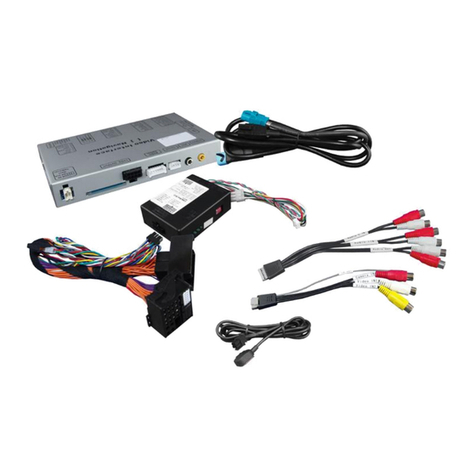
v.link
v.link CI-VL2-PC-HSD manual
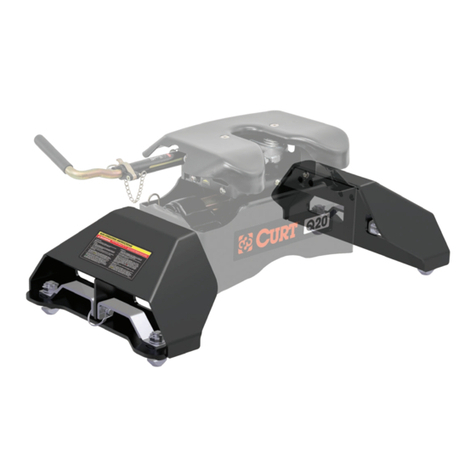
Curt Manufacturing
Curt Manufacturing A25 installation instructions
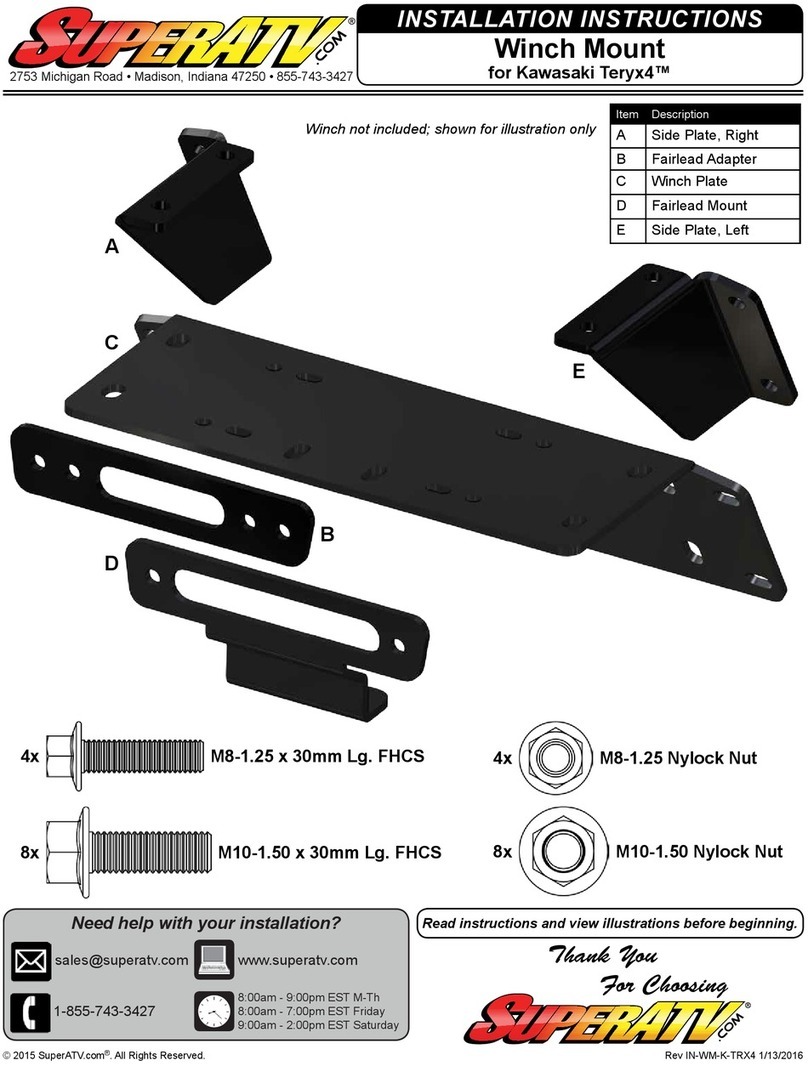
SuperATV
SuperATV WM-K-TRX4 installation instructions
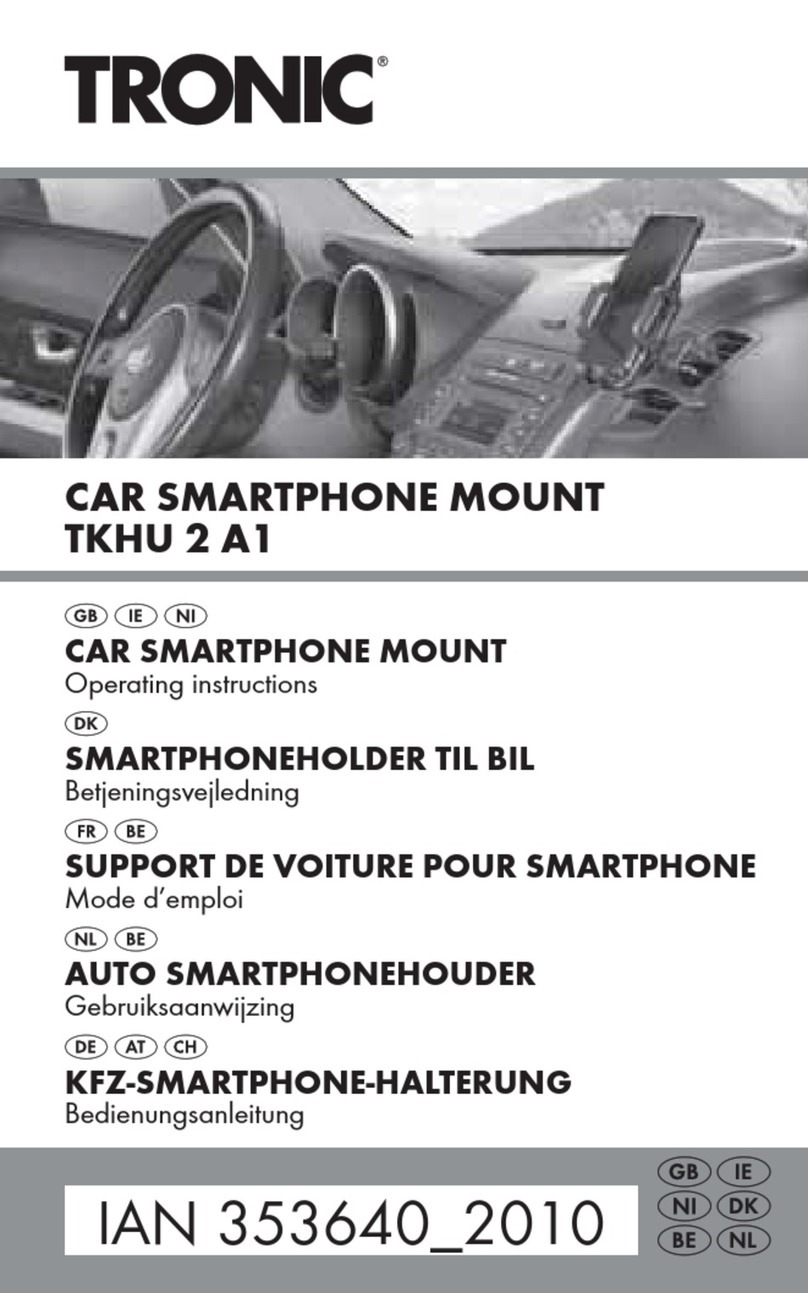
Tronic
Tronic TKHU 2 A1 operating instructions
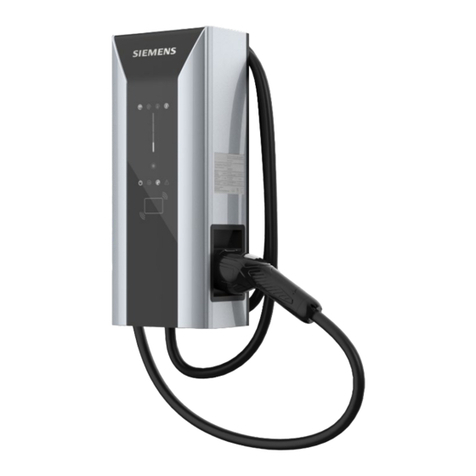
Siemens
Siemens 8EM1310-2EH04-0GA0 Compact operating instructions
